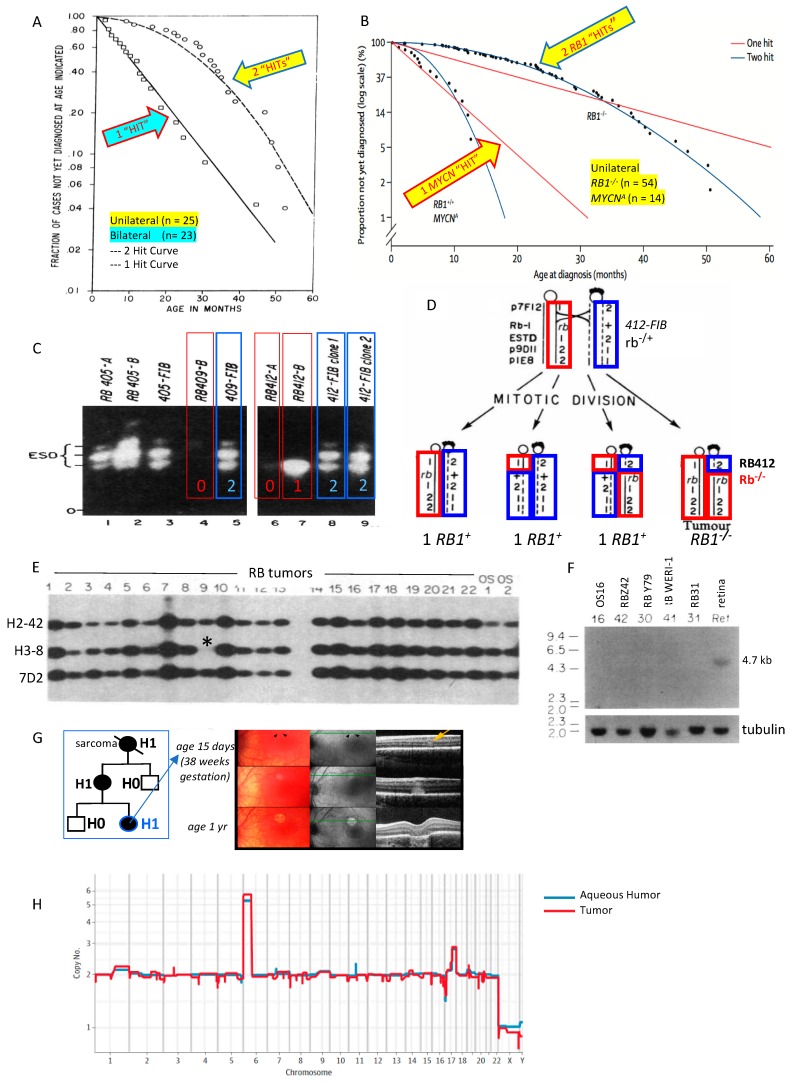Figure 1.
The RB1 story. (A) Knudson evaluated age at diagnosis vs. proportion not diagnosed; two hits initiated unilateral retinoblastoma and only one hit was required for bilateral patients predisposed to retinoblastoma [1]. (B) A rare third form of unilateral, non-hereditary retinoblastoma has normal RB1 alleles and instead is driven by one hit: high-level amplification of the oncogene MYCN (reproduced from [23], with permission). (C) Inactivation in tumor of esterase D alleles near the retinoblastoma susceptibility locus suggested regional somatic inactivation was the second hit in some retinoblastoma tumors [10]. (D) Mitotic recombination results in loss of heterozygosity around RB1 locus so that cells that form the retinoblastoma tumor have lost both copies of normal RB1 [11,12]. (E) Retinoblastoma tumor 9 (of 22) has homozygous deletion of H-38 probe (*) that mapped in the 13q14 genomic region [16]. (F) The RB1 tumor suppressor gene is cloned: a conserved DNA sequence near H-38 probe hybridized to a 4.7 kb messenger RNA found in all normal tissues but not in retinoblastoma or osteosarcoma tumors [17]. (G) Persons carrying a RB1 pathogenic variant are H1 (at risk for retinoblastoma and second cancers); prenatal detection and early term delivery facilitates detection and laser treatment of invisible tumors with minimal scarring (reproduced from [60], with permission). (H) Cell-free DNA from fluid behind the cornea (aqueous humor) shows the same pattern of copy number changes characteristic of retinoblastoma as the tumor from the removed eye (reproduced from [62], with permission).

